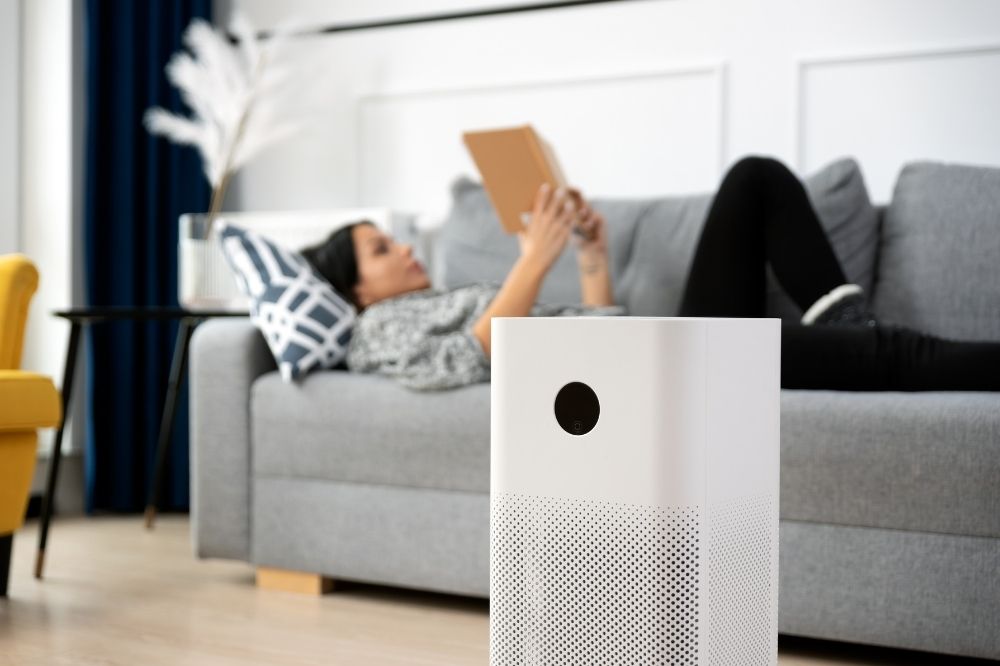Did you know the air inside your home could be two to five times more polluted than what’s outside? Despite this startling fact, indoor air quality often remains an afterthought in our health considerations. Each day, we inhale an invisible mixture of particles—dust, pet dander, volatile organic compounds (VOCs), and mold spores—silently circulating throughout our living spaces. These unseen contaminants can trigger allergies, worsen asthma symptoms, and contribute to various respiratory issues.
Understanding Indoor Air Quality
Indoor air quality encompasses the condition of air within enclosed spaces, assessed through measurements of particulate matter, VOC levels, carbon dioxide, and humidity. The Environmental Protection Agency (EPA) ranks poor indoor air quality among the top five environmental health risks we face. Common culprits degrading your home’s air include dust mites, mold, pet allergens, pollen, tobacco smoke, residues from cleaning products, and chemicals off-gassing from furniture and building materials.
Indoor air quality directly impacts your daily comfort and long-term health. Research from the World Health Organization (WHO) has connected substandard indoor air with increased risks of respiratory ailments, cardiovascular problems, and even diminished cognitive function. Those most vulnerable include children, the elderly, and individuals with pre-existing health conditions.
Everyday Habits to Reduce Indoor Pollutants
You might be surprised how effectively simple daily actions can reduce indoor pollutants without breaking the bank:
- Create a “shoes-off” policy at entrances to prevent tracking outdoor contaminants inside
- Use a vacuum equipped with a HEPA filter at least weekly, focusing on high-traffic areas
- Launder bedding in hot water weekly to eliminate dust mites and allergens
- Maintain humidity between 30-50% to discourage mold and dust mite proliferation
- Declutter regularly—fewer surfaces mean fewer places for dust to accumulate
Proper ventilation forms your first defense against indoor pollution. Even just 5-10 minutes of open windows daily creates cross-ventilation that flushes stale air out and brings fresh air in. Don’t forget to use exhaust fans in kitchens to reduce smoke while cooking and bathrooms to remove moisture and cooking byproducts before they spread throughout your home.
Consistency is key to maintaining healthier indoor air. While establishing a regular cleaning routine might not seem exciting, it remains one of the most effective long-term strategies for better air quality.
Choosing the Right Air Purification Solutions
Not all air purification technologies address the same problems. HEPA filters excel at capturing 99.97% of particles as small as 0.3 microns, making them ideal for allergens and dust. Meanwhile, activated carbon filters effectively absorb odors and gases but struggle with particulate matter. UV-C technology can neutralize microorganisms but doesn’t remove airborne particles, and ionizers—while popular—may produce ozone as a byproduct, potentially irritating sensitive lungs.
When shopping for an air purifier, consider your specific circumstances—the size of your space, which pollutants concern you most, noise tolerance, and ongoing maintenance requirements. Remember that air purifiers vary widely in capability and design—choose one tailored to your specific needs.
Integrating Air Purifiers into a Holistic Air Quality Plan
Air purifiers deliver the best results when incorporated into a comprehensive strategy rather than relied upon as a complete solution. Position them strategically in spaces where you spend the most time—typically bedrooms and living areas. Don’t overlook maintenance; regular filter replacement according to manufacturer guidelines ensures optimal performance.
For those interested in advanced filtration with smart features, options like dyson air purifiers are engineered to tackle a broad spectrum of indoor pollutants. However, even the most sophisticated purifier cannot compensate for poor ventilation or ongoing pollution sources within your home.
Think of air purifiers as valuable tools in your air quality toolkit, not silver bullets. The most effective approach remains source control—identifying and eliminating pollutants at their origin whenever possible.
Additional Strategies for Cleaner Indoor Air
While their impact is more modest than mechanical filtration, houseplants add both beauty and some air-cleaning benefits to your home. Species like spider plants and peace lilies can help reduce certain VOCs while bringing nature indoors. During renovations, opt for low-VOC or zero-VOC paints, adhesives, and building materials to minimize chemical off-gassing.
Never smoke indoors, and be mindful about using candles, incense, and wood-burning fireplaces, all of which release particulate matter into your living space. These seemingly small material choices and habit adjustments can significantly improve your home’s air quality over time.
Summing Up: Creating a Healthier Home Environment
Enhancing indoor air quality demands a comprehensive approach combining source reduction, proper ventilation, effective filtration, and mindful daily habits. Start by identifying the strategies most relevant to your living situation—whether that means addressing persistent moisture issues, upgrading your cleaning routine, or investing in air purification technology.
Your efforts to improve indoor air will reward you with better health, fewer allergy symptoms, and a more comfortable home environment. After all, the foundation of a healthier home begins with the very air you breathe.

